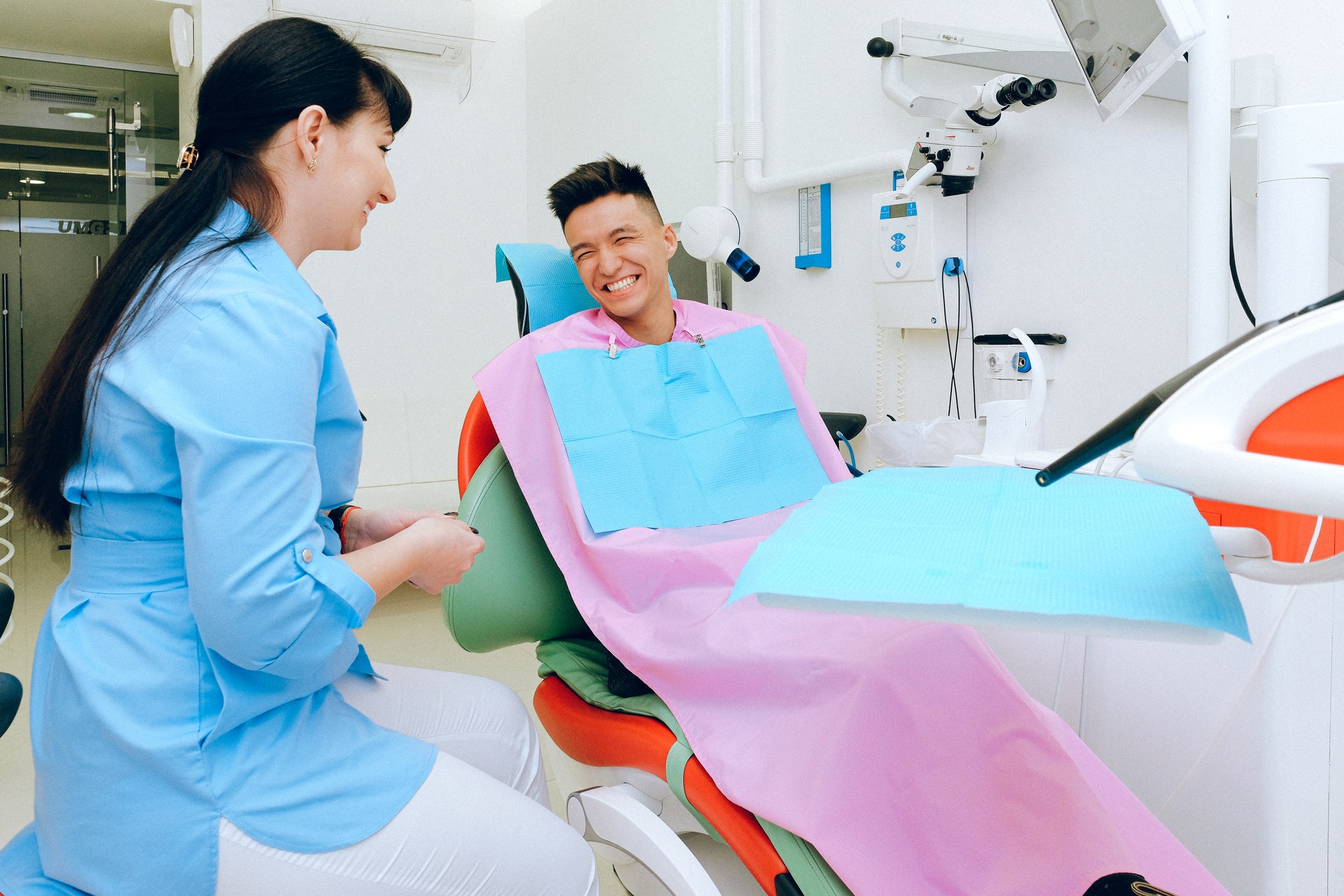The demand for teeth whitening is growing. Having a bright, white smile is often associated with self-confidence, looking younger, and feeling more attractive. A study shows 1 in 4 adults avoid smiling due to the condition of their mouth and teeth. The question is if the benefits of maintaining a whiter smile might also come with drawbacks.
There are actually several options for teeth whitening, and each brings a varying level of risks to the table. Understanding the options and the risks to teeth whitening can help guide the decision whether to whiten or not.
Why Don’t Teeth Stay White?

Ever wonder why teeth yellow in the first place? There are both internal and external factors that can cause the teeth to yellow, known as intrinsic and extrinsic stains. It is important to see a dentist to know which type of stain the teeth contain before being able to determine the steps to take for whitening. Whitening is safe for both types of stains, but both at-home and professional products work best on extrinsic stains. Some intrinsic stains cannot be removed at all.
Some foods and drinks can cause extrinsic stains. Examples include sodas, coffee, tea, alcohol, citrus fruits, and candy. These items are known to be acidic and sugary, which can wear away the enamel, or the white outer layer, of teeth.
Another external factor, and one of the worst contributors to yellowing teeth, is smoking cigarettes or chewing tobacco. There are harmful chemicals found in nicotine and tobacco that can stain tooth enamel. Not only do these habits yellow teeth, they can also cause gum disease.
Genetics can contribute to intrinsic stains. Some people are born with a naturally strong, white smile while others might be born with thin enamel, making teeth appear naturally darker than normal.
Regardless of what teeth you are born with, aging can cause the wear and tear of the enamel slowly over time. Other intrinsic stains can occur as a result of tooth decay, some oral medications, or tooth trauma causing nerve damage to the tooth.
While reducing the effects of both extrinsic and intrinsic stains can be an ongoing battle, tooth care alone is an important first defense to maintain white teeth. Brushing and flossing regularly will avoid the buildup of plaque and leftover food, helping to eliminate excess stains.
Options for Teeth Whitening

Teeth whitening can be done at home or at a dentists office. At-home remedies, including rinses and toothpastes, offer quick and easy methods for gradual brightening. Many people use whitening toothpastes to aid in removing surface stains as part of a risk-free daily cleaning routine.
For more aggressive teeth whitening at home, gel whitening strips and whitening trays are available. The trays are filled with a peroxide-based gel and worn for up to an hour. Whitening strips contain a similar gel, and are usually worn for up to 30 minutes. These methods primarily remove superficial stains and and should be used as directed.
Whitening trays and strips pose a risk of misuse and overuse. The chemicals in the gel can be harmful to the teeth if the patient does not use the products as directed. This can lead to tooth decay, tooth sensitivity, and gum irritation.
Dentists offer in-office whitening procedures that take less time than over-the-counter options. There are different methods dentists use including pure peroxide, ultraviolet light boost, and laser teeth whitening. A dentist can apply a higher concentrated bleach solution directly to the teeth. Most of these whitening procedures last about an hour and require only one office visit per year. The benefit of in-office treatment is that professional supervision minimizes many of the risks associated with at-home kits.
At-home whitening kits vary in both cost and results. These options are inexpensive, but it might take multiple applications before seeing noticeable results. Most at-home kits can only make the teeth 1-2 shades brighter.
Although professional whitening will cost more, results are often brighter and more immediate. Laser whitening at an office can often make the teeth 12 shades brighter. Seeing a dentist will also help reduce the risks to teeth whitening.
Weighing the Risks
While teeth whitening is generally considered safe, some people wonder if it can make their teeth weaker, or if the chemicals are bad for them. The peroxide in teeth whitening bleach can damage the cells of the gums. It can also damage the nerves, blood vessels, and connective tissues of the tooth. In either case, the overuse of these chemicals can lead to tooth sensitivity and gum irritation.
Heightened teeth sensitivity can come in the form of short sharp pains in response to hot or cold foods and drinks, and usually occurs shortly after bleaching agents are applied.
If whitening products are overused or used incorrectly, the peroxide in the whitening gel can wear away tooth enamel and irritate the dental nerves. Another risk to teeth whitening is a chemical burn resulting in more severe pain and inflammation if the whitening product reaches the gums repeatedly.
Discomfort resulting from teeth whitening is usually temporary, lasting no longer than two days. To reduce sensitivity after whitening, individuals can:
- use sensitive toothpaste
- brush gently
- stick to room temperature foods and drinks
- take over-the-counter pain relievers
It is important to note that whitening products might cause harm to patients with cavities, exposed roots, or badly worn enamel. It is advised to see a dentist to make sure the teeth are healthy before choosing to whiten them. Likewise, teeth containing dental crowns and fillings cannot be whitened, causing them to stand out instead of blend in when whitening products are used.
Although some consider the at-home teeth whitening kits to be more convenient and less expensive, the in-office options are safe and offer longer lasting results. A dentist oversees the entire whitening procedure, allowing for the use of stronger bleaching agents for faster and brighter results.
In general, patients with no prior gum irritation or tooth sensitivity can use at-home kits without any problems. For those with sensitive teeth or gums, professional in-office whitening treatments are recommended to protect the gums and prevent irritation. Professional care also allows for the elimination of human error, like the overuse and misuse of whitening products.
Find a Local Expert in Teeth Whitening
Whitening products are increasingly popular, and have been used for decades by millions of people. Because teeth whitening comes with some risks, products containing bleach and hydrogen peroxide should be used with caution.
To remain safe, look for professionally approved products. Make sure to follow the instructions carefully for any of the whitening options provided. Reach out to a dentist with any questions and concerns, and to find out which option is best for you. If you experience any discomfort or sensitivity, try taking a break from whitening treatments or switching to an alternative option.
To find a dentist in your area that offers safe and effective whitening treatments or recommendations, use our online search tool.


